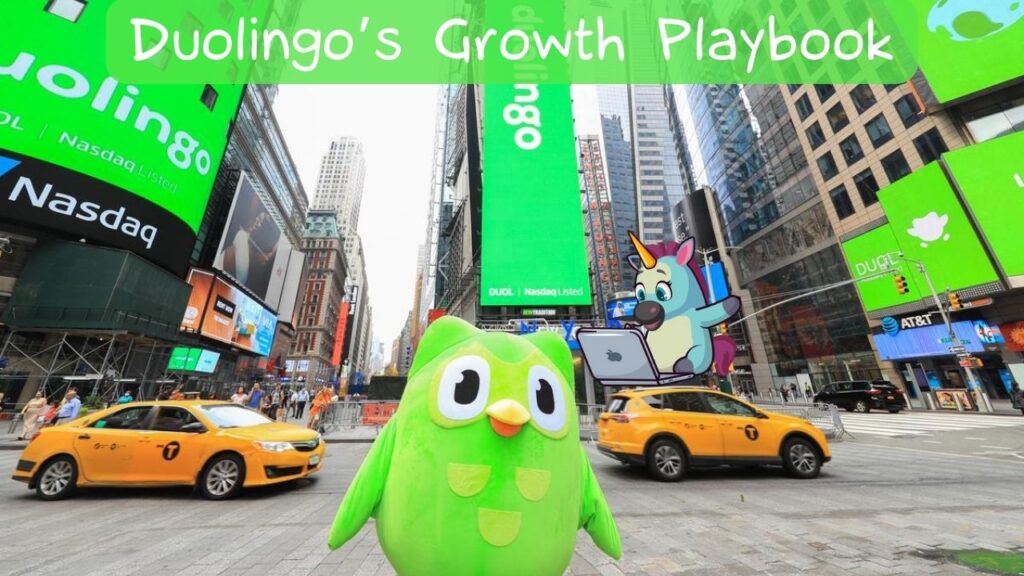
Hey there, growth enthusiasts! 👋
Today, we’re diving deep into the growth story of Duolingo, a Gen Z favorite language-learning app that changed how people learn a new language. 🌍
With a massive user base of 500 million and a valuation of $8 billion, it’s clear that Duolingo is doing something right.
But, as we’ll discover, their journey to the top was no walk in the park.
Duolingo faced its fair share of challenges, making their success story all the more inspiring.
We’ve scoured the internet, dug through countless interviews, and even tried our hand at learning Klingon (just kidding) to bring you the unfiltered, behind-the-scenes look at Duolingo’s growth tactics, early crowdsourcing strategies and the challenges they faced along the way.
So, whether you’re a language nerd, a growth marketer, or just curious about how Duolingo became a household name, you’ve come to the right place.
Let’s dive in! 🤿
The Idea💡

It all started back in 2009 when Duolingo co-founder Luis von Ahn was teaching at Carnegie Mellon University.
Having experienced the inequalities of education, he knew firsthand that learning a new language was either too expensive or ineffective.
That’s when the lightbulb moment struck:
What if there was a way to make language learning crowdsourced, fun, and free forever for everyone?
Luis teamed up with his graduate student, Severin Hacker, and together, they put together a plan to create a language-learning app that would not only be free but also highly engaging and personalized.
But how they would make it work in a capitalistic world?
The Problem 😫

Before Duolingo burst onto the scene, the language-learning landscape was a bit of a mess.
Traditional classroom lessons were often expensive, inconvenient, and, let’s face it – sometimes just plain boring. 😴
Online resources weren’t much better.
They were either too pricey, lacked the necessary depth, or failed to keep learners engaged.
And don’t even get us started on language-learning software.
It was often clunky, repetitive, and about as much fun as watching paint dry.
In short, there was a glaring need for a language-learning solution that was accessible, engaging, and effective.
The MVP 🛠️
Duolingo’s MVP was all about turning their bold idea into a functional reality.
To make language learning free and accessible, they needed to get creative.
The Idea?
Crowdsourcing user translations! 🌍
Here’s how it worked:
As users progressed through language lessons, they simultaneously helped translate articles into their native language.
This innovative approach allowed Duolingo to keep costs low while providing users with an authentic learning experience.
It was a win-win!
While the MVP wasn’t perfect, it was a crucial first step.
It proved that Duolingo’s crowdsourced translation model could work and paved the way for future iterations and improvements.
Product-Market Fit 🎯

Duolingo’s MVP was a hit, but the real test was yet to come.
Would users flock to the platform and stick around for the long haul? 🤔
The answer was a resounding yes!
In 2011, Duolingo co-founder Luis von Ahn took to the TED stage to share his vision for the future of language learning.
The response was overwhelming – within hours of the talk, Duolingo’s waiting list exploded to 300,000 users.
By 2012, Duolingo had hit 1 million users, and by 2013, they were adding an astonishing 1 million new users every 10 days.
The numbers don’t lie – Duolingo had found its product-market fit.
They had created a language-learning solution that was not only effective but also wildly popular.
Positioning & Branding 🎨📐
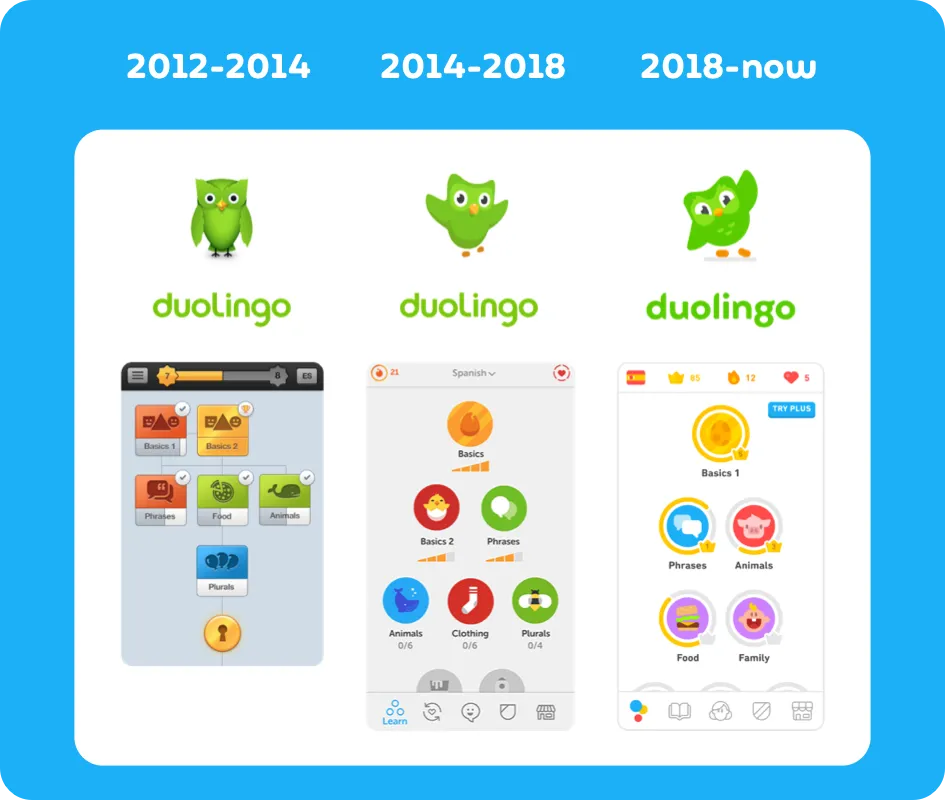
Duolingo’s positioning is all about making language learning accessible, fun, and effective for everyone.
Their mission is simple yet powerful:
“To develop the best education in the world and make it universally available.”
They’ve carved out a unique space in the market by combining gamification, bite-sized lessons, and an enjoyable user experience.
Duolingo isn’t just another boring language-learning app – it’s a fun, addictive, and rewarding journey.
Duolingo’s branding is just as playful and engaging as its product.
From the cute green owl mascot (Duo) to the vibrant, colorful design, everything about Duolingo screams fun and approachability. 🦉💚
But don’t be fooled by the cute exterior – Duolingo means business when it comes to language learning.
Their cheeky and witty tone, combined with a data-driven approach, has earned them a loyal following and a reputation as a serious player in the education industry.
Through its positioning and branding, Duolingo has managed to make language learning cool, accessible, and, dare we say – even sexy. 😎
Pricing 💰📊
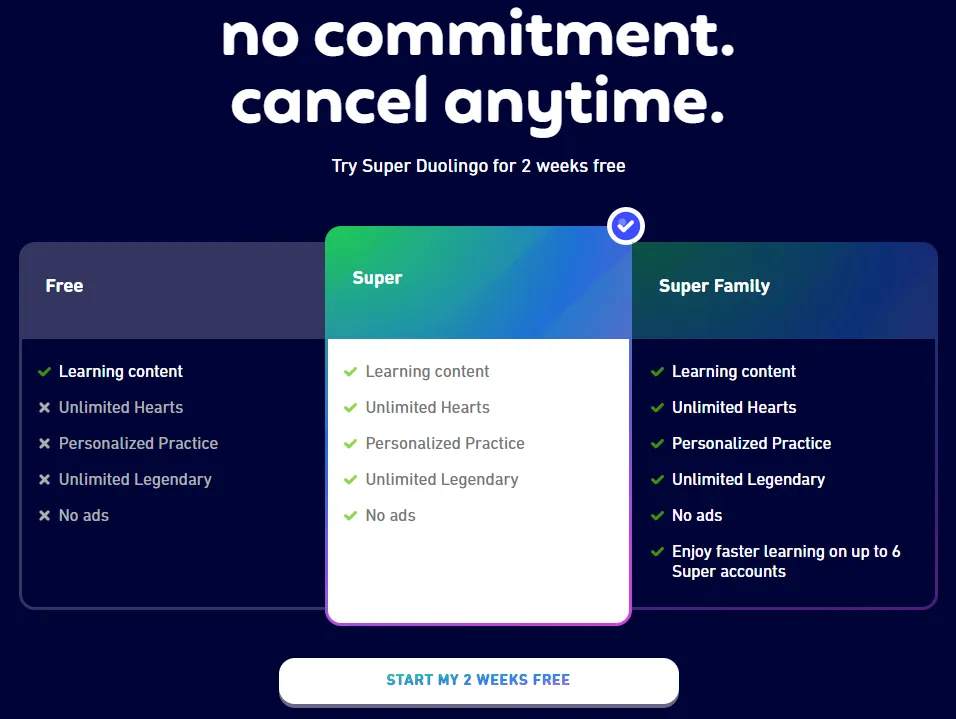
Duolingo’s pricing journey has been anything but boring.
They started with a completely free app, relying on a crowdsourced translation model to keep the lights on.
But as the company grew, the evil investors 😈 began to put pressure on them to monetize.
In 2017, Duolingo introduced its first paid subscription, Duolingo Plus.
This ad-free version offered offline access and other premium features.
Some users weren’t thrilled about the change, but Duolingo remained committed to providing a robust free experience.
Fast forward to 2022, and Duolingo has not one but two paid subscription plans!
Duolingo Plus, at $6.99 per month, removes ads and includes features like unlimited hearts and offline access. 💚
But for the real language learning enthusiasts, there’s Duolingo Max.
At $29.99 per month, Max includes everything in Plus, as well as exclusive features like AI-powered conversations and personalized lessons. 🤖
Despite the introduction of paid plans, Duolingo has never wavered from its mission to make language learning accessible.
The free version of the app is still packed with content and features, ensuring that everyone can learn, regardless of their budget.
It’s a tricky balance, but Duolingo seems to have found a way to keep users happy and investors satisfied.
By offering a few pricing options and maintaining a strong free offering, they’ve managed to create a sustainable business model that supports their mission.
Acquisition 🚀📈
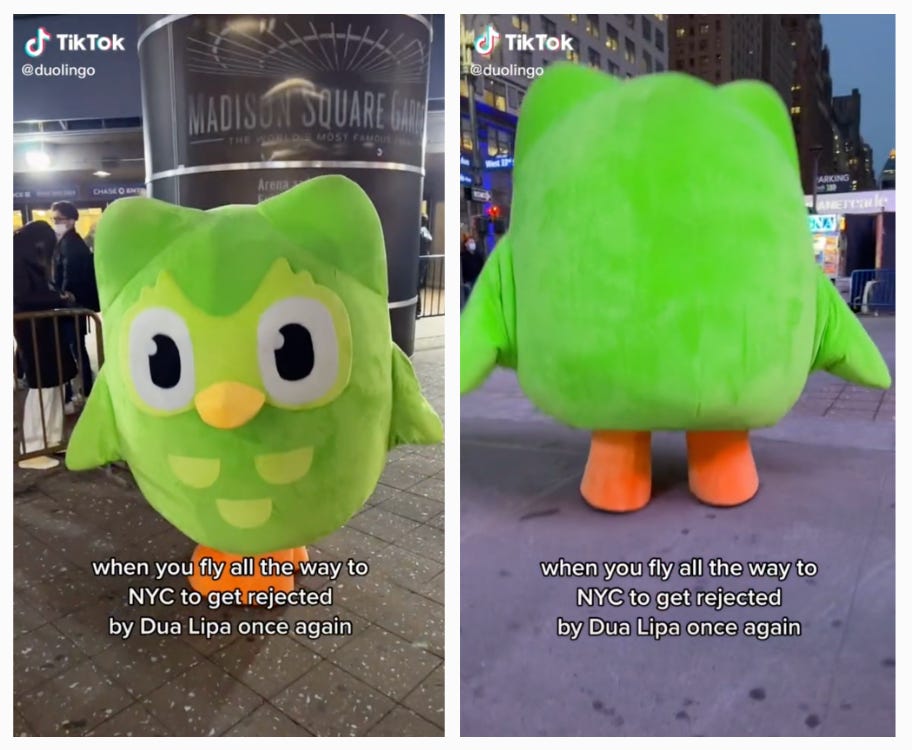
First off, let’s take a look at some numbers.
A whopping 80% of Duolingo’s users come from organic sources.
That’s right, they’ve managed to attract millions of language learners without spending a dime on paid marketing!
So, what’s their secret?
Product-led growth.
By offering a top-notch language learning experience that keeps users hooked, Duolingo has mastered the art of word-of-mouth marketing.
Happy users can’t resist sharing their love for the app with friends and family, creating a viral loop that just keeps on giving.
Of course, Duolingo’s crew had a lot to do with it.
With all the gamification milestones and easiness of sharing, they pushed a bit users’ fingers to tap that share button.
But Duolingo isn’t just relying on organic growth.
They’ve also cracked the code on social media, particularly on TikTok.
With over 10 million followers and a knack for jumping on trends, Duolingo has become a viral success.
From hilarious skits featuring their mascot Duo to witty interactions with users, Duolingo’s TikTok game is on fire!
And let’s not forget about their killer brand persona.
By infusing humor, relatability, and a touch of quirkiness into their content, Duolingo has created a brand that people can’t help but fall in love with.
The results speak for themselves. Duolingo’s daily active users skyrocketed from 5 million to nearly 30 million in just five years.
Now, that’s what we call a growth success story!
Growth Loops 🔄🚀
All unicorns that respect themselves use growth loops, and Duolingo is not an exception.
First up, the “Product Led Viral Loop.” 🌍
Here’s how it works:
- A user discovers Duolingo and starts learning a language.
- They fall in love with the app’s engaging content and gamified experience.
- The user shares their progress on social media, and their friends learn about Duolingo.
- Those friends sign up, and the loop starts all over again!
This loop works in perfect harmony. 🎵
The more users share their progress, the more their friends join.
It’s a beautiful, never-ending cycle of growth that keeps Duolingo’s user base expanding.
Activation 🎬🔥
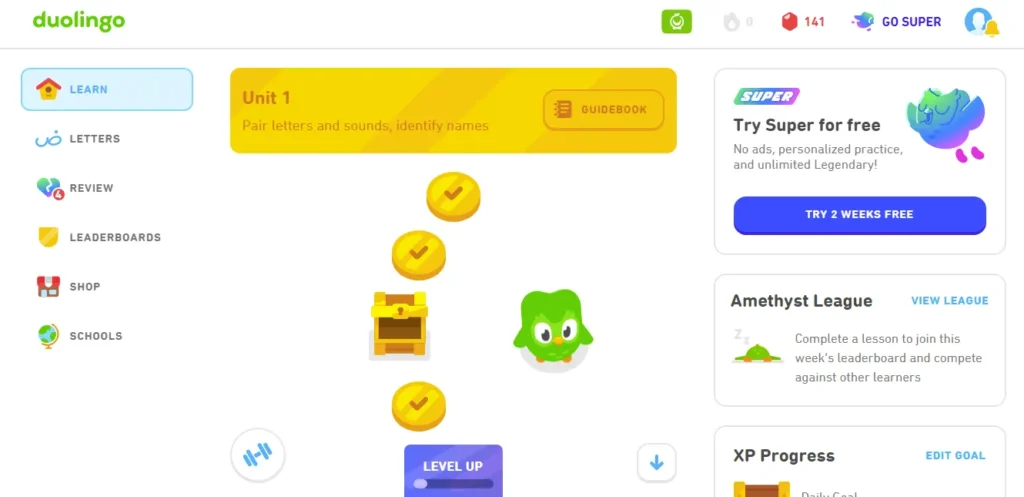
Duolingo’s activation strategy is all about helping new users quickly understand and experience the app’s value.
By offering a free product and an onboarding process that showcases key features, Duolingo enables users to start learning right away.
The app’s simple design makes it easy for new users to navigate and find the courses they’re interested in.
With a variety of languages to choose from and a placement test to ensure users start at the right level, Duolingo helps learners feel confident and motivated from the get-go.
During the onboarding process, Duolingo highlights its bite-sized lessons and gamification elements, demonstrating how the app fits easily into users’ daily routines while making learning fun and engaging. 🎓
By quickly guiding users to experience the core value of the app – learning a new language – Duolingo’s activation strategy sets the stage for long-term engagement and success. 🌍
Retention 🔒❤
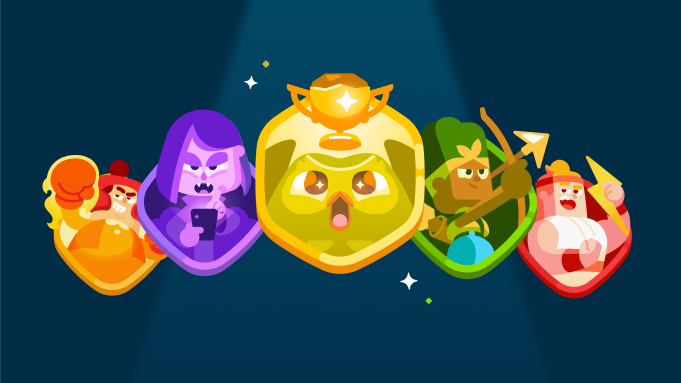
Ah, retention – the secret ingredient that keeps Duolingo users coming back for more!
First, let’s talk gamification.
Duolingo is probably the best startup when it comes to gamification.
They have mastered the art of turning language learning into a game, with features like XP, streaks, and leaderboards that keep users engaged, motivated, and happy to share. 🎮
Users can’t resist the urge to keep their streak going or to climb to the top of the leaderboard, which means they’re logging in day after day to keep the language learning momentum going.
But Duolingo’s real retention superpower?
Push notifications. 📲
These little nudges are like a friendly reminder from Duo himself, encouraging users to come back and learn.
But be careful – Duo can be a bit of a nag! 😅
Some users have even joked about feeling “personally victimized” by Duo’s persistent notifications.
And that brings us to the guilt factor.
Duolingo has been known to use a bit of guilt-tripping to keep users engaged, with notifications like “Don’t let Duo down!” or “Your Spanish is getting lonely.”
While this approach can be effective in the short term, it’s a delicate balance.
Too much guilt and users might start to feel resentful or overwhelmed.
In fact, some users have complained about the pressure to maintain their streaks, feeling like they can’t take a day off without losing all their hard-earned progress.
Duolingo has had to find ways to give users more flexibility, like streak freezes and weekend amulets, to keep them from burning out.
At this point, it’s worth mentioning that Duolingo’s team is obsessed with data and A/B testing.
So, everything mentioned in this section is obsessively tested to perfection.
Overall, by combining gamification, push notifications, and just the right amount of guilt, they’ve created a language-learning experience that keeps users coming back for more – even if they occasionally need a break from Duo’s watchful eye! 👀
Referral 📣🎉
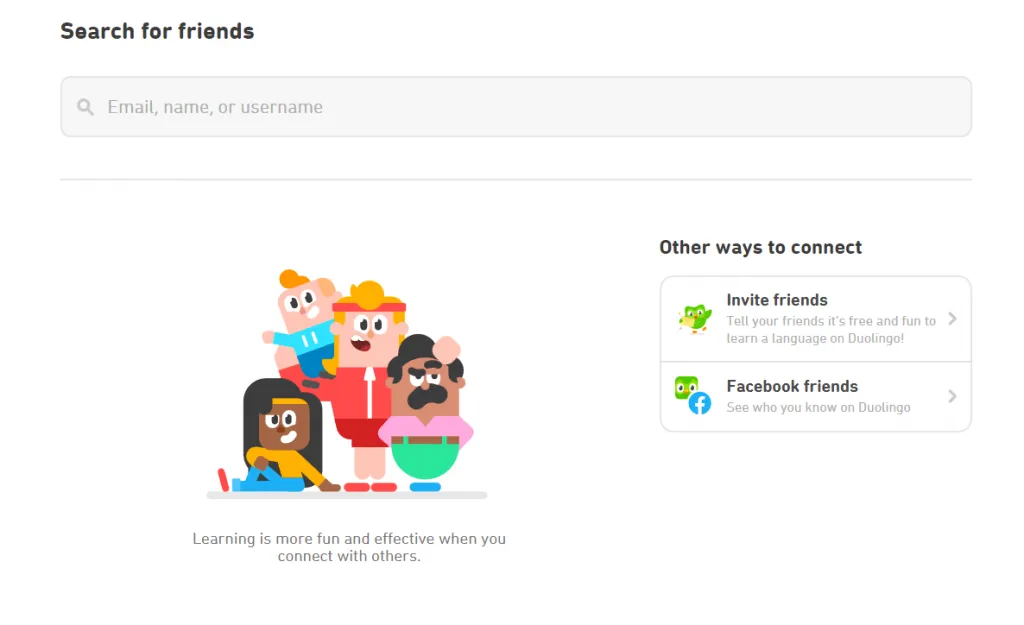
By offering users free Plus subscription time for inviting friends, Duolingo has turned its user base into a powerful marketing machine.
With just a few taps, users can easily share their love for the app, and when their friends sign up, they’re rewarded with a satisfying dopamine hit.
But the magic doesn’t stop there – those newly referred users are more likely to stick around and even start inviting their own friends, creating a viral loop of language learning love.
The best part?
Referred users tend to be more engaged and have higher retention rates, proving that learning a language is better together.
Lessons Learned 🎓
Hold onto your berets, language learners – it’s time to distill Duolingo’s growth secrets into five bite-sized lessons!
Lesson 1: Gamification is the Name of the Game 🎮
Duolingo’s mastery of gamification is the stuff of legends.
By turning language learning into a fun, addictive game, they’ve kept users hooked and coming back for more.
The takeaway? Inject some gamification into your product and watch engagement skyrocket!
Lesson 2: Use the Power of Organic Growth 🌱
Who needs paid marketing when you’ve got a product that sells itself?
Duolingo’s focus on creating an incredible user experience and shareability has fueled its organic growth engine.
The lesson? Build a product people can’t stop raving about, and watch the word-of-mouth referrals roll in!
Lesson 3: Let Your Brand Personality Shine 😎
From their cheeky mascot to their irreverent TikToks, Duolingo’s quirky brand personality is impossible to ignore.
The key? Don’t be afraid to let your brand’s unique voice and style take center stage!
Lesson 4: Experiment with New Platforms 📱
Duolingo’s TikTok domination proves that sometimes, you need to think outside the box (or the app store).
The lesson? Be willing to try new platforms and formats to reach untapped audiences!
Lesson 5: Data is Your Best Friend 📊
Duolingo’s growth team lives and breathes data, using it to optimize everything from user acquisition to retention.
The takeaway? Embrace the power of data-driven decision-making and watch your growth metrics soar!
Phew, what a wild ride through the wonderful world of Duolingo’s growth!
We’ve uncovered the secrets behind their success, from their gamification genius to their unbeatable brand personality.
It’s clear that Duolingo is not just a language learning app – they’re a growth powerhouse with a whole lot of heart (and a little bit of sass 😉).
But hey, the learning doesn’t have to stop here!
If you’ve enjoyed this deep dive and picked up a few growth tactics along the way, why not share the love?
Go ahead and pass this article along to your fellow language learners, growth gurus, and Duo superfans.
And if you’re feeling extra generous, give us a shout-out on social media – we promise Duo won’t blush too hard. 😊
Until next time!

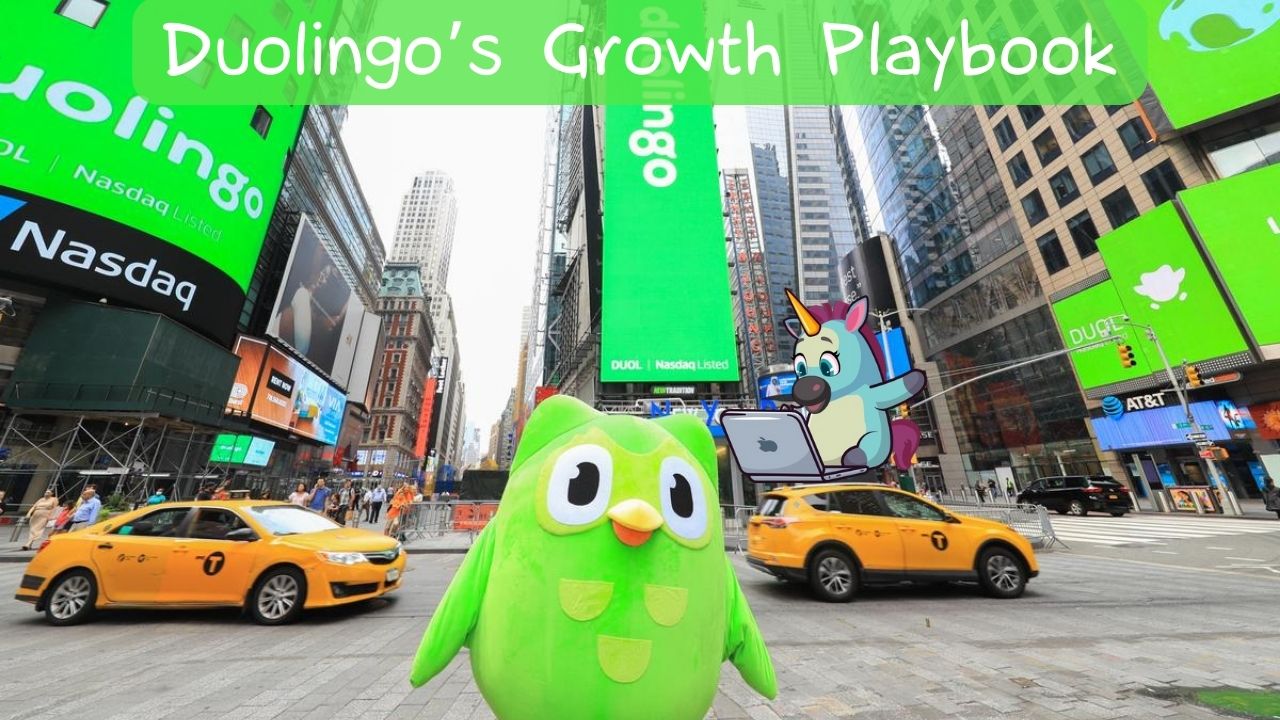
Leave a Reply